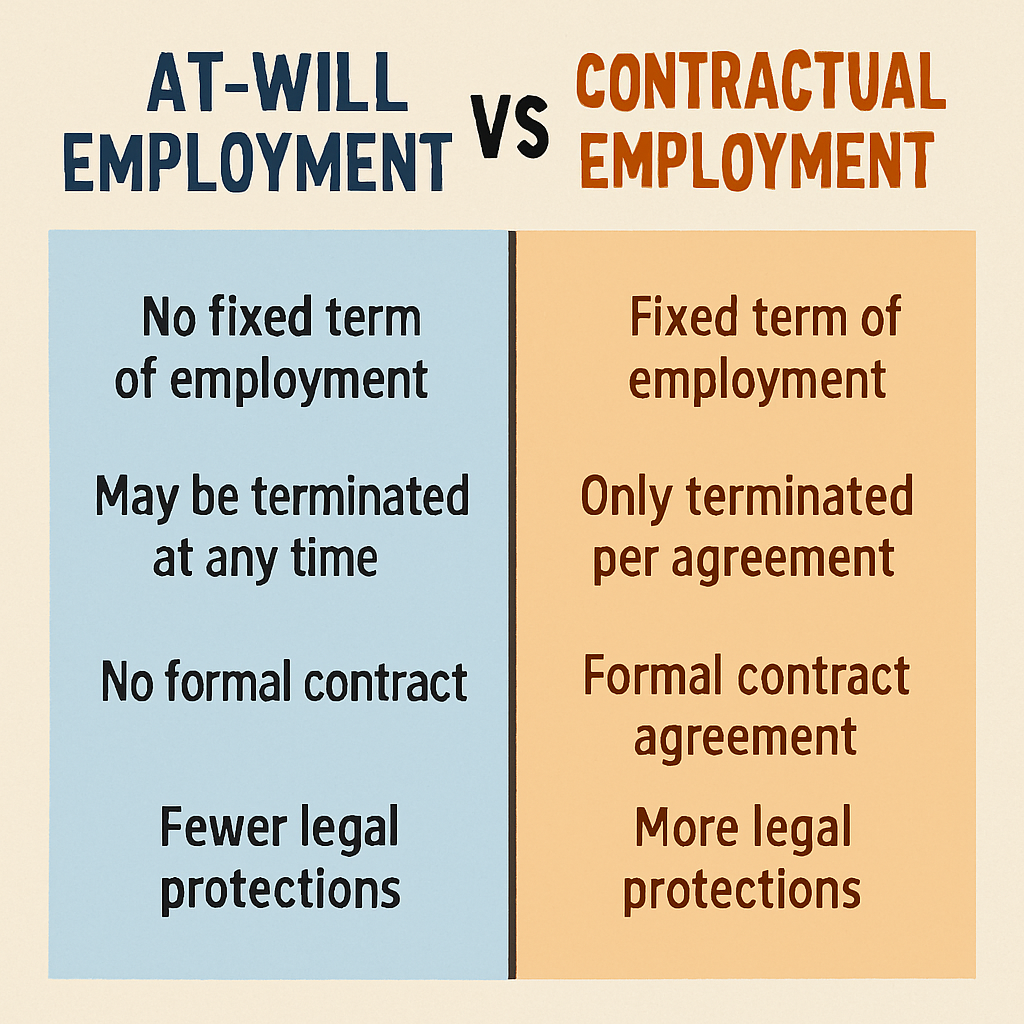A Complete Guide to Wrongful Termination and What You Can Do About It
Wrongful termination can be a confusing and stressful experience. Understanding your rights is crucial in such situations.
Many employees are unaware of the legal protections available to them. This lack of knowledge can lead to missed opportunities for justice.
Wrongful termination occurs when an employee is fired for illegal reasons. These reasons can include discrimination or retaliation.
Knowing the difference between lawful and unlawful termination is essential. It helps in identifying if your rights have been violated.
Consulting a wrongful termination attorney can provide clarity. They can guide you through the legal process and help build your case.
This article aims to educate you on your rights and options. It will also explain how to find the right legal support.
By the end, you will be better equipped to handle wrongful termination issues.
What Is Wrongful Termination?
Wrongful termination occurs when an employee is fired for illegal reasons. This can happen even when employment laws are in place.
Common illegal reasons include discrimination based on race or gender. Other reasons might involve firing in retaliation for whistleblowing.
To better understand wrongful termination, consider these points:
- Discrimination: Being fired due to race, age, or gender.
- Retaliation: Losing your job for reporting unlawful activities.
- Violation of Public Policy: Dismissal for refusing to break laws.
- Breach of Contract: Firing contrary to the terms of an employment agreement.
Sometimes, employees are let go despite having a valid contract. Termination for reasons not outlined in the contract is unlawful.
It’s essential to differentiate wrongful from lawful termination. Lawful termination can occur for performance issues if clearly justified.
Understanding these differences can help you recognize wrongful termination. Being informed will assist in protecting your employment rights.
Common Reasons for Wrongful Termination
Wrongful termination arises from various unlawful reasons. Understanding these reasons can help you identify if your termination was unjust.
Discrimination is a frequent cause of wrongful firing. Being terminated based on race, gender, religion, or age is illegal. Employers must treat all employees equally.
Retaliation is another common cause. This occurs when employees are fired for speaking up against illegal practices. Employers might unlawfully fire employees to silence them.
Review these prevalent causes of wrongful termination:
- Discrimination: Termination for race, gender, or age.
- Retaliation: Fired for reporting misconduct.
- Breach of Contract: Firing against contractual terms.
- Whistleblowing Protection: Firing due to lawful reporting.
Breach of contract is another significant factor. If your firing contradicts an employment agreement, it might be wrongful. Employers must abide by contract terms when ending employment.
Lastly, whistleblower protection is crucial. Dismissing an employee for exposing unlawful acts is unlawful. Understand your rights to ensure your termination wasn’t improper.
Legal Protections Against Wrongful Termination
Employees have several legal protections to guard against unlawful termination. These laws can provide recourse for those wrongfully dismissed from their jobs.
Federal laws, like the Civil Rights Act, protect against discrimination-based termination. This act prohibits employers from firing based on race, color, or national origin. Similarly, the Age
Discrimination in Employment Act safeguards older employees.
State laws also play a crucial role. Many states have additional laws that further protect workers from unjust firing. These laws can offer extra layers of security beyond federal protections.
Here are key legal protections to consider:
- Civil Rights Act: Prohibits discrimination in termination.
- Age Discrimination in Employment Act: Protects older workers.
- Americans with Disabilities Act: Shields employees with disabilities.
- State-specific laws: Offer additional protection.
The Americans with Disabilities Act is another protection. It makes firing due to a disability unlawful. Knowing these protections ensures you’re better equipped to challenge wrongful dismissal.
At-Will Employment vs. Contractual Employment
Understanding employment types is crucial in wrongful termination cases. In the U.S., most employment is “at-will,” meaning either party can end the relationship at any time, with or without cause.
At-will employment offers flexibility but lacks security. Employers can terminate without explanation, provided it doesn’t breach discrimination laws. Employees can also leave jobs freely.
Contractual employment is different. Contracts outline specific terms and conditions for termination, providing more job security. Employers must have a valid reason to terminate a contract-based employee.
It’s essential to know what type of employment you have. This knowledge affects your legal options if wrongfully terminated. Contracts often include stipulations like notice periods or severance terms.
Key differences between at-will and contractual employment include:
- Job Security: At-will provides less security.
- Termination Causes: Contracts require valid reasons.
- Notice Periods: Common in contracts but not at-will.
- Legal Protections: Vary with employment type.

Recognizing these differences can aid in identifying wrongful termination. Understanding your employment status empowers you to protect your rights.
Quick FAQ: Did you know that Montana is the only non at-will state in the union?
Recognizing Signs of Wrongful Termination
Recognizing potential wrongful termination is vital for taking timely action. Certain signs can indicate unjustified dismissal.
Unexplained changes in workload or responsibilities could hint at wrongful intent. If your role is suddenly altered without reason, this may be a red flag.
Negative performance reviews without prior warnings or documentation can also be suspect. Legitimate performance issues are usually preceded by documented communications.
Observe any differential treatment you receive compared to colleagues. Discrimination may manifest through unequal opportunities or harsher evaluations.
Consider these warning signs:
- Sudden Job Changes: Unexplained demotion or task redistribution.
- Erratic Reviews: Negative feedback without documented past issues.
- Unequal Treatment: Disparity in treatment based on personal characteristics.
- Severance Offers: Prompted dismissals with unexpected compensation offers.
When these indicators are present, scrutinizing the situation is wise. Understanding such signs helps safeguard your employment rights.
Federal Laws on Wrongful Termination
Understanding federal laws related to wrongful termination can be crucial for both employees and employers.
These laws are designed to protect employees from being unjustly dismissed from their jobs and to ensure fair treatment in the workplace.
Here are some key federal laws that address wrongful termination:
- Title VII of the Civil Rights Act of 1964: Prohibits employment discrimination based on race, color, religion, sex (including pregnancy, sexual orientation, and gender identity), or national origin.
- The Age Discrimination in Employment Act (ADEA): Protects workers aged 40 and older from employment discrimination based on age.
- The Americans with Disabilities Act (ADA): Prohibits employment discrimination against qualified individuals with disabilities. It also requires employers to offer reasonable accommodations.
- The Family and Medical Leave Act (FMLA): Allows eligible employees to take up to 12 weeks of unpaid, job-protected leave in a 12-month period for specific family or medical reasons, such as the birth of a child, caring for a family member with a serious health condition, or the employee’s own serious health condition.
- Occupational Safety and Health Act (OSHA): Ensures safe and healthy working conditions by requiring employers to comply with workplace safety and health standards. It prohibits retaliation, such as termination, against employees for reporting workplace safety violations, injuries, or hazards, or for participating in OSHA investigations
Check your state for any wrongful termination laws which may apply to your case. For instance, California has some of the most stringent and pro-employee rights laws in the country.
Steps to Take If You Suspect Wrongful Termination
If you suspect wrongful termination, taking immediate steps can protect your rights. Acting quickly is crucial in these situations.
Firstly, document everything related to your employment. Save emails, performance reviews, and any relevant communications. They can serve as evidence in your case.
Next, consult with a wrongful termination attorney. Professional guidance helps you understand your situation and plan a strategy. Having expert advice is important.
Inform the Equal Employment Opportunity Commission (EEOC) if discrimination is involved. Filing a complaint with the EEOC is a protective move.
Here’s what to document:
- Correspondence: Emails and messages related to termination.
- Performance Reviews: All evaluations and feedback received.
- Job Description: Original and any modified versions.
- Termination Notice: Details and rationale provided by the employer.
Follow these steps promptly:
- Seek Legal Counsel: Find an attorney skilled in employment law.
- File a Complaint: Initiate communication with relevant authorities.
- Assess Severance Agreements: Before signing, ensure fairness and legality.
Taking these steps can strengthen your case and protect your interests in wrongful termination disputes.
The Role of a Wrongful Termination Attorney
A unlawful termination attorney plays a crucial role in defending your rights. They provide expert advice tailored to your specific situation. Understanding the law is complex, and a skilled attorney navigates these waters with ease.
Attorneys assess the facts of your case and determine its merits. They advise on evidence needed to support your claim. Having an attorney helps avoid legal pitfalls and strengthens your position.
Lawyers for unjustified firing represent you in negotiations and legal proceedings. They engage with your employer and other parties involved. A termination lawyer ensures your voice is heard.
Key roles of a wrongful termination attorney include:
- Case Evaluation: Determining the legitimacy of your claim.
- Gathering Evidence: Collecting and organizing necessary documentation.
- Legal Representation: Advocating on your behalf during legal processes.
- Negotiating Settlements: Seeking fair compensation for damages.

Having a knowledgeable attorney can significantly impact the outcome of a wrongful termination case. Their expertise is invaluable in achieving a fair result.
How to Find the Right Attorney for Your Case
Finding the right attorney starts with research. Look for attorneys experienced in employment law. A lawyer with a history of handling wrongful termination cases is essential.
Seek recommendations from trusted sources. Personal referrals and online reviews can provide valuable insights. Consider lawyers who have a track record of success.
When choosing, schedule consultations to discuss your case. Assess their communication style and understanding of your situation. This helps ensure you’re comfortable working with them.
Consider these factors when selecting your attorney:
- Experience: Verify their history with similar cases.
- Reputation: Check reviews and ask for client feedback.
- Approach: Confirm they align with your goals and needs.
The right attorney supports your journey to justice. Their guidance is crucial in navigating legal challenges effectively.
Filing a Wrongful Termination Claim: The Process
Filing a wrongful termination claim begins with gathering evidence. Compile documentation, such as emails and performance reviews. This evidence will support your claim.
Consult with a wrongful termination attorney to evaluate your situation. They will assess your evidence and provide guidance on your next steps. Their expertise is crucial in building a solid case.
You may need to file a complaint with the Equal Employment Opportunity Commission (EEOC) or a similar state agency. This is often a necessary step before a lawsuit. The EEOC investigates your claim and may attempt mediation.
Prepare for the possibility of taking your case to court. Your attorney will file a lawsuit if necessary. Be ready for depositions, hearings, and possibly trial.
Keep these steps in mind when considering a claim:
- Gather Documents: Collect relevant evidence.
- Consult an Attorney: Seek professional guidance.
- File with EEOC: Submit a formal complaint.
- Lawsuit: Be prepared for legal proceedings.
What to Expect During a Wrongful Termination Lawsuit
A wrongful termination lawsuit involves several stages. Initially, your attorney will file a complaint in court. The employer must respond to this complaint.
Discovery follows, allowing both parties to gather more evidence. This phase involves depositions, interrogatories, and document exchanges. Be prepared to provide and receive detailed information.
Mediation might occur before heading to trial. Mediation aims to settle disputes without prolonged litigation. Many cases resolve during this stage, saving time and resources.
If unresolved, the case proceeds to trial. Here, both sides present evidence and arguments. The judge or jury then decides the outcome based on the case merits.
When preparing for a lawsuit, keep these key stages in mind:
- Filing: Initiating the complaint.
- Discovery: Exchanging evidence.
- Mediation: Attempting resolution.
- Trial: Presenting your case in court.
Potential Outcomes and Remedies
Wrongful termination cases can conclude in various ways. Outcomes depend on circumstances and the strength of your case. Understanding potential remedies helps set realistic expectations.
One common resolution is financial compensation. This may cover lost wages, benefits, and emotional distress. Settlement amounts vary based on case specifics and negotiations.
Another potential outcome is reinstatement to your former position. Reinstatement is less common but possible. It often occurs when both parties wish to continue employment.
Additionally, the court might award punitive damages. These punish the employer for intentional or egregious conduct.
Outcomes in wrongful termination cases may include:
- Financial Compensation: Covering lost wages and benefits.
- Reinstatement: Returning to your job.
- Punitive Damages: Penalizing wrongful conduct.
Statute of Limitations and Timelines
Time is crucial when dealing with wrongful termination claims. Each state has specific deadlines for filing a lawsuit.
Missing these deadlines can forfeit your right to sue. Understanding your timeline is essential for protecting your rights.
Key timeline considerations include:
- Federal Claims: Typically 180 days from termination.
- State Claims: Vary by state, often 30 to 90 days.
- Contractual or Union Agreements: Check specific terms.
Protecting Yourself from Wrongful Termination in the Future
Safeguarding your job starts with understanding your rights and responsibilities. Knowledge of employment laws helps prevent wrongful termination.
Building a positive work reputation is also essential. Consistency and professionalism go a long way in any workplace.
Steps to protect yourself:
- Document everything: Keep records of important interactions.
- Know your contract: Be clear on the terms and conditions.
- Seek feedback: Regularly ask for performance reviews.
- Stay informed: Keep up with changes in employment laws.
- Maintain a professional network: Connect with colleagues and industry peers.
Resources and Support for Wrongfully Terminated Employees
Experiencing wrongful termination can feel isolating. However, you are not alone. Various resources exist to guide you through this challenging time. Seeking the right support is crucial for moving forward effectively.
Consider these resources:
- Legal aid clinics: Offer free or low-cost legal guidance.
- Support groups: Connect with others who have faced similar issues.
- Online forums: Share experiences and receive advice.
- Employment law firms: Specialize in wrongful termination cases.
- Community organizations: Provide workshops and counseling services.
Frequently Asked Questions About Wrongful Termination
Navigating wrongful termination can be confusing. You likely have several questions. Here are common inquiries along with brief answers to guide you.
- What constitutes wrongful termination? Illegal firing based on discrimination or retaliation.
- Can I sue my employer? Yes, if laws were violated during your termination.
- How long do I have to file a claim? Typically up to 180 days, but varies by state.
- Do I need a lawyer? It’s recommended to consult an expert for guidance.
Conclusion: Empowering Yourself Through Knowledge
Understanding your rights is critical in protecting yourself from wrongful termination. Being informed allows you to make educated decisions.
Equip yourself with knowledge and seek guidance from experienced professionals. Remember, standing up for your rights not only helps you but can also create positive change in your workplace. Empowerment starts with awareness.
Your rights as an employee are important and understanding these laws and how they effect you is crucial to having a successful outcome and defense against employers who wish to violated the law.
If you live in California and need legal assistance with a wrongful termination claim California Labor Law can help. Our employment lawyers are some of the best in nation. Call us at 1-888-924-3435 or fill out the form for a free wrongful termination case review. Consultations are free and you pay nothing unless we win.


